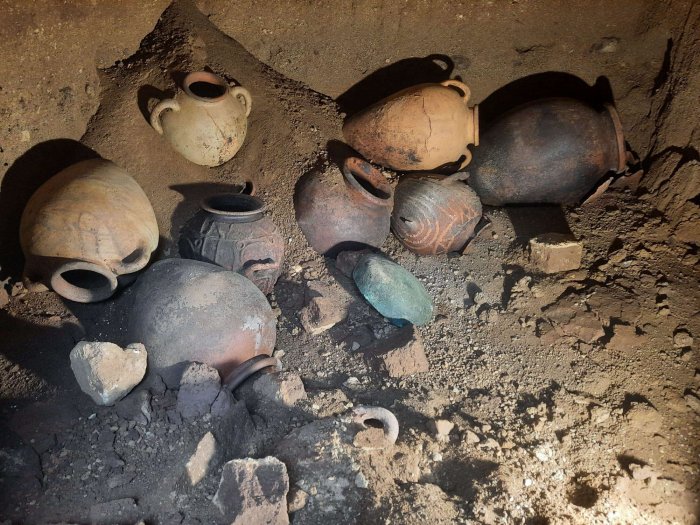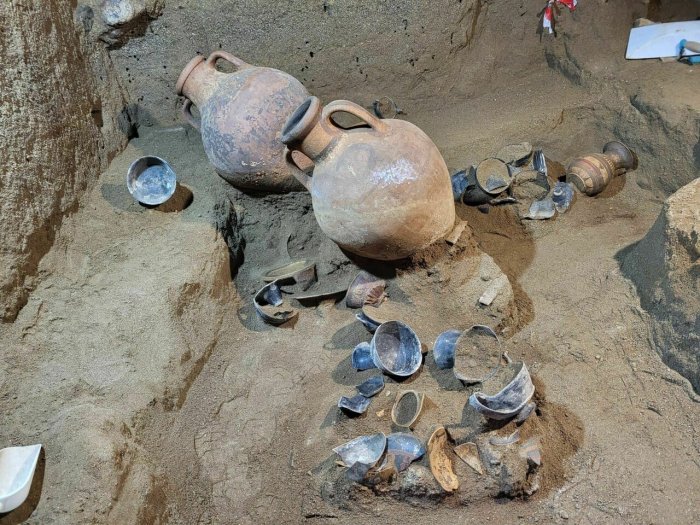Jan Bartek – AncientPages.com – Archaeologists have opened an Etruscan tomb that has remained sealed for about 2,600 years. The double-chambered tomb located in the Osteria necropolis in Vulci, a rich Etruscan city in what is now northern Lazio, central Italy, is intact and contains extremely rare remains and artifacts.

Investigation of the Etruscan tomb 58. Credit: Municipality of Montalto di Castro
Designated tomb 58, the ancient burial was discovered in April this year. The same month, a similar tomb was opened in the necropolis. The Vulci Foundation excavation campaign is being conducted by the Soprintendenza Archeologia, Belle Arti e Paesaggio, for the province of Viterbo and southern Etruria.
A decision was made to open the very large double chamber. Getting inside was not an easy task, though, because multiple slabs of tufa blocked its entrance. The stones had to be removed one by one. Once archaeologists entered the ancient burial chamber, they were confronted with a vast trove of pottery and amphorae containing wine from Greece, most likely from the island of Chios.

The unearthed objects shed new light on the ancient wine trade. Credit: Municipality of Montalto di Castro
All the objects, utensils and ornamental accessories, cups, bronzes, ironware, and pottery, were found in perfect condition, including the tablecloth used for the Etruscan ritual of the “last meal.” Inside the tomb was a well-preserved bronze cauldron and other items indicating the burial belonged to what must have been a high-class family.
The Osteria necropolis, at the entrance to the Vulci Archaeological and Nature Park in the municipality of Montalto di Castro, is known for previous fascinating archaeological finds. At this site, scientists discovered the mysterious tomb of the Silver Hands, the “Tomb of the Sun and the Moon,” the “Panathenaic,” “Carved Ceilings” and a monumental burial, the “Tomb of the Sphinx”, dating from the sixth century B.C.
As reported by Finestre sull’Arte, the artifacts recovered from the Etruscan tomb provide considerable scientific and historical information about life in Vulci at that time and of its aristocracy during the city’s heyday. The amphorae are particularly interesting as they shed new light on the ancient wine trade.

Credit: Municipality of Montalto di Castro
The tomb’s architectural layout is worthy of closer studies. It appears to be characterized by a septum spared in the rock that creates an archway between the dromos, that is, the short corridor with steps, and the vestibule, from which there was access to the two chambers, the front, and the left: the one, usual, on the right, is missing, evidently because other tombs had already occupied the space.”
See also: More Archaeology News
Simona Carosi, archaeologist in charge of the Archaeological and Nature Park, emphasizes how this find “gives us back in an unusual way the actual funerary banquet, as the Etruscans had laid it centuries and centuries ago.”
Written by Jan Bartek – AncientPages.com Staff Writer





